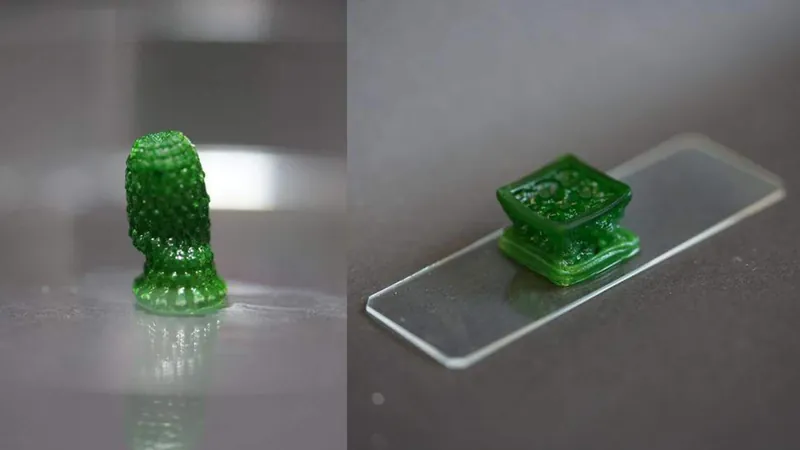
Revolutionary 'Living' Material Develops to Combat CO2 Emissions
2025-06-26
Author: John Tan
A Groundbreaking Innovation in Construction
Swiss researchers have unveiled an extraordinary 'living' material designed to absorb atmospheric carbon dioxide (CO2). This innovative construction material harnesses the power of blue-green algae—known as cyanobacteria—which can photosynthesize CO2 into oxygen and sugars.
Transforming CO2 into Sustainable Building Blocks
Beyond its basic function, this remarkable substance can also convert CO2 into durable construction components and solid minerals such as limestone, potentially revolutionizing urban architecture by turning buildings into allies in the fight against climate change.
How It Works: The Science Behind the Magic
The newly developed material is a hydrogel, rich in water and designed for 3D printing. Its porous structure allows light, water, and CO2 to permeate, creating an ideal environment for the cyanobacteria to thrive. As the algae consume CO2, they either lock it into themselves as biomass or convert it into stable minerals, offering two layers of CO2 storage.
Impressive Results from Long-Term Testing
In an extensive 400-day study, this living material continuously absorbed CO2, capturing an impressive 26mg of CO2 per gram of material. While algae growth may taper off after the first month, the absorption process continues as minerals accumulate, ensuring ongoing efficacy.
Showcasing the Future of Eco-Friendly Architecture
Recently showcased at an architecture exhibition in Venice, Italy, the material was presented in artistic forms resembling tree trunks. Researchers project that this material can absorb approximately 18kg of CO2 annually—comparable to the carbon capture of a 20-year-old pine tree.
A Bright Future Ahead
Looking forward, the team aims to genetically engineer the cyanobacteria to enhance their photosynthetic efficiency. Additionally, they are developing nutrient delivery systems to prolong the life and effectiveness of the material, marking a promising step toward more sustainable and resilient construction practices.


 Brasil (PT)
Brasil (PT)
 Canada (EN)
Canada (EN)
 Chile (ES)
Chile (ES)
 Česko (CS)
Česko (CS)
 대한민국 (KO)
대한민국 (KO)
 España (ES)
España (ES)
 France (FR)
France (FR)
 Hong Kong (EN)
Hong Kong (EN)
 Italia (IT)
Italia (IT)
 日本 (JA)
日本 (JA)
 Magyarország (HU)
Magyarország (HU)
 Norge (NO)
Norge (NO)
 Polska (PL)
Polska (PL)
 Schweiz (DE)
Schweiz (DE)
 Singapore (EN)
Singapore (EN)
 Sverige (SV)
Sverige (SV)
 Suomi (FI)
Suomi (FI)
 Türkiye (TR)
Türkiye (TR)
 الإمارات العربية المتحدة (AR)
الإمارات العربية المتحدة (AR)